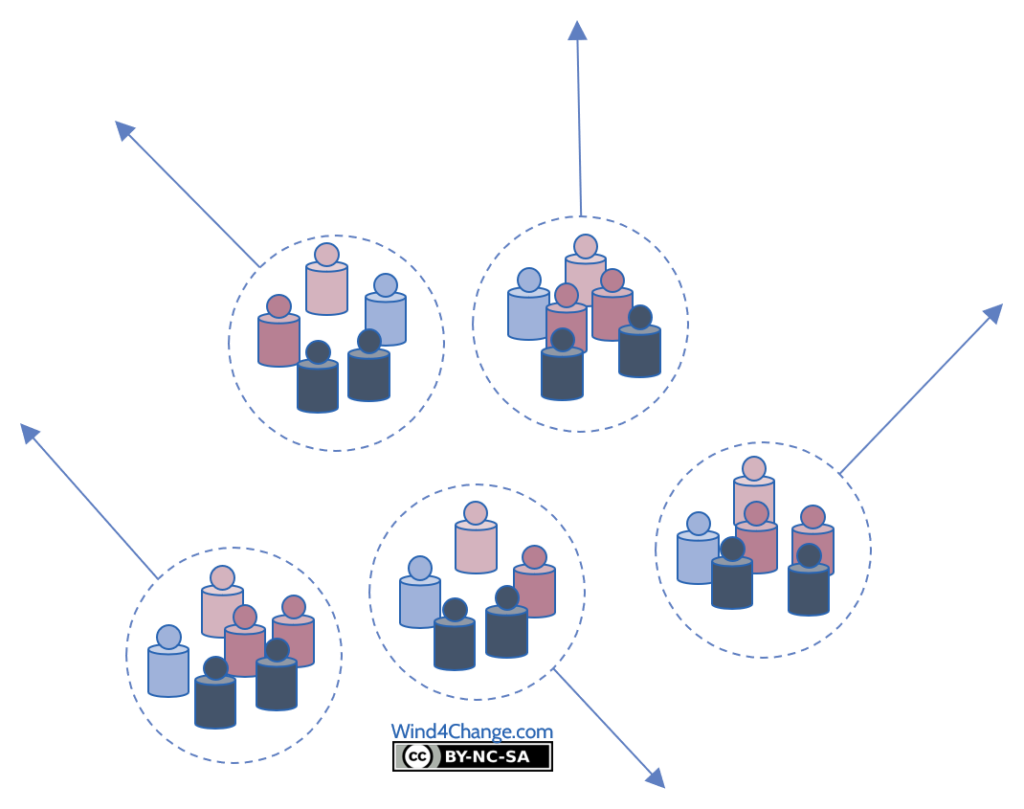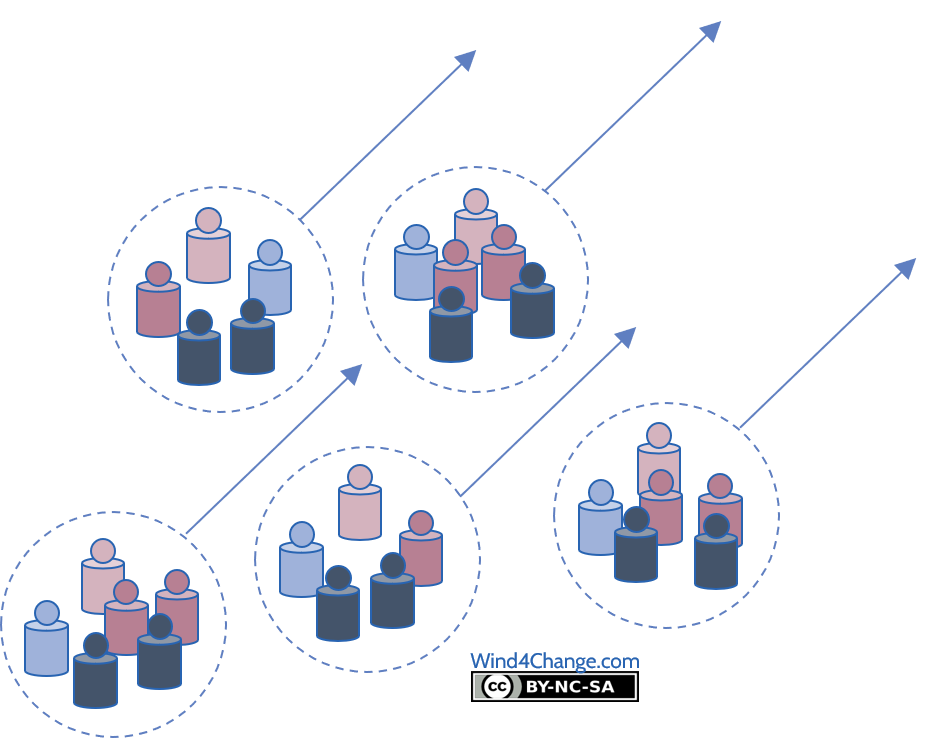What is Agile at Scale for enterprise?
Agile at Scale is the next frontier with implementing agile. Indeed, the challenge is not just to spread Agile over teams, with Agile frameworks like Scrum or Kanban, to cover at least all the IT. But it is to rethink at scale a whole perimeter leveraging Agile at Scale frameworks like Spotify or SAFe so all pieces including support activities like budgeting and planning embrace Agile. As a result, groups of teams are aligned and cadenced on the same business objectives. In addition, Agile enhanced transversal activities support them. Truly, exponential benefits are at stake.
Furthermore, the following elements are also impacted to assist scaling of Agile for enterprise and go beyond IT and the related Business interface: the Organization, the Processes either business or transversal like planning and budgeting, and the skills either hard and soft. In addition, Culture and Leadership traditionally called management are also required to change for the Agile at Scale transformation to be a success and lasts.
- What is Agile at Scale for enterprise?
- What is the model described here when talking about Agile at Scale? And how does this Agile at Scale model articulate with Spotify and SAFe?
- Warning: like for the Spotify Model, do not copy past
- Why going Agile at Scale? What are the benefits?
- What’s next? Learn more about Agile at Scale
- Here is a collection of references about the Spotify Model
What is the model described here when talking about Agile at Scale? And how does this Agile at Scale model articulate with Spotify and SAFe?
The model here is a return of experience based on:
- Firstly, the Spotify Model as published by Henrik Kniberg in October 2012. You can find his excellent white paper here. At that time, Spotify grew from 50 to 250 people and 30 Squads. Without a doubt, the organization part elaborates on this Return on Experience.
- Secondly, several Agile frameworks proposing solutions to scale agility. Indeed, they have been an inspiration to define the synchronization mechanisms between the Agile Squads:
- Scaled Agile Framework (SAFe)
- Thirdly, other resources from the Agile or the state of art Management schools of thought
- At last, my experience since 2010 deploying Lean and Agile in the context of a large international investment bank with an IT of 7500 people split over Paris (40% of the staff), Bangalore (about 30%) and the other 20% shared between New-York, Hong-Kong and London to make it simple.
Warning: like for the Spotify Model, do not copy past
This return of experience should be an inspiration like Spotify Model was an inspiration for us. Therefore, do no copy paste. On the contrary, instantiate this return of experience to the context of your company.
Why going Agile at Scale? What are the benefits?
As we have seen in the introduction, Agile is the best way for IT and business to work together and maximize outcomes at the level of a Team.
What does happen when Agile just spreads over organization?

What happens is a good illustration of local optimization versus global optimization of a system. Indeed, each team and related Product Owner is quite efficient but the system collecting all the teams is not as all of them are going in different directions.
Agile at Scale pushes up Agile value proposal at the level of the company

The value proposal of Agile at Scale:
- Firstly, maximize the Value delivered by the IT at the level of the organization
- Secondly, reduce the Time to Market for the whole Product/Service not just at the level of elementary components or sub Products
- Thirdly, maximize Quality for the whole Product/Service whatever the team involved
- At last, boost innovation to be at the level of the company
Some principles of implementation of Agile at Scale:
- Firstly, align all the teams on a business and makes them act like a single team
- Secondly, maximize the value at the level of a business not at the level of elementary components
- Thirdly, deliver an end-to-end Product not a collection of elementary components
- To finish, demonstrate iteratively and an integrated way at the level of a business not at the level of elementary components
What’s next? Learn more about Agile at Scale
Check my other posts about Agile at Scale:
- Review my posts on Agile at Scale foundations:
- What are
- What are the team topologies?
- How to synchronize Agile Squads in Agile at Scale when there are dependencies?
- Check another of my posts introducing Agile at Scale that leverages the book “Doing Agile Right”.
- Review my post on the Agile best practices from the GAO the Government Accountability Office from the USA.
- Read my posts on advanced topics around Agile at Scale:
- What are Leagues in Agile at Scale?
- How to design Agile Squads so they are aligned on the Value Chains.
- Why going for horizontal management? What does it mean and what is the value?
- How roles are reallocated with Agile at Scale?
- Check my posts on project management in Agile at Scale
- What is the impact of Agile on Project Management?
- How does Project Portfolio Management change with Agile at Scale?
- Then, how does Cost of Delay Divided by Duration (CD3) contribute to Agile at Scale?
- How does Beyond Budgeting support Agile at Scale?
- Can an Agile Project be fixed price?
- How to manage Release Management in Agile?
- Review my posts on how to forge a good strategy:
- What are competition and competitive advantage?
- What is a good strategy?
